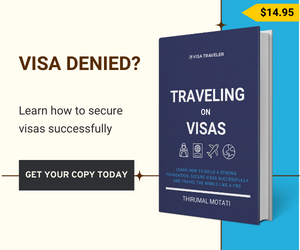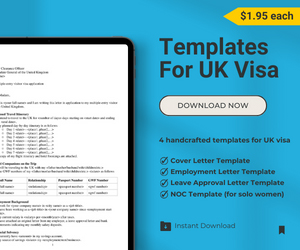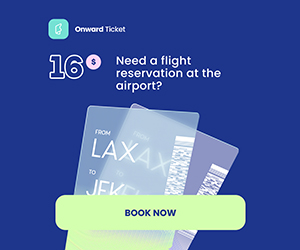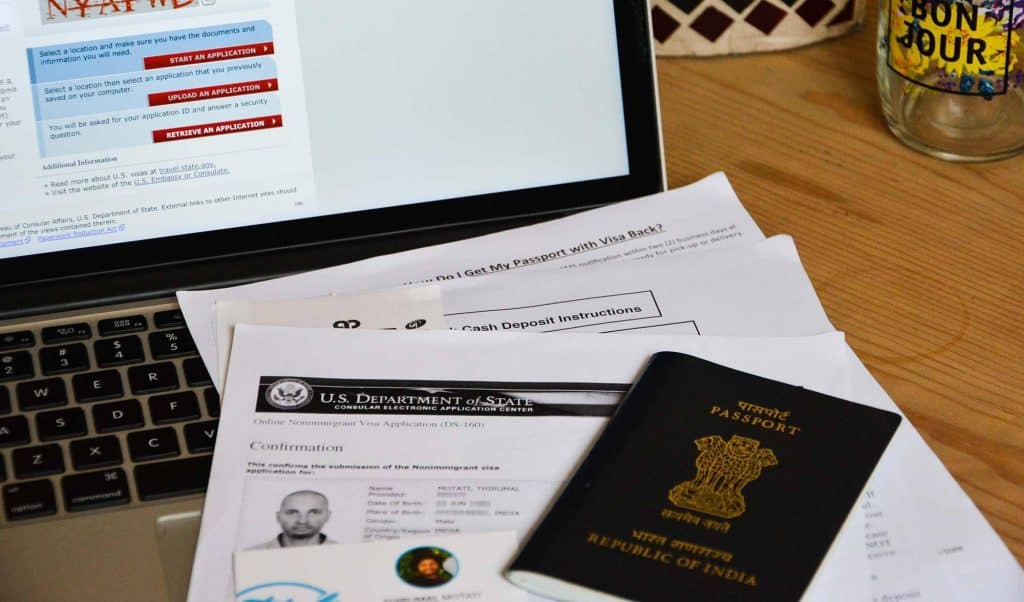

The full name in native alphabet is a field that appears on the DS-160 form. DS-160 form is an online visa application form for non-immigrant US visas such as B1/B2, H1, L1, etc.
The full name in native alphabet field in DS-160 form should be filled out, as the name suggests, in your native language. This involves using any special characters or accents that your name might include. This field needs to be filled out after you have filled out your surnames and given names fields.
Filling out the full name in native alphabet field is not mandatory. You can skip it if it does not apply to you or your computer doesn’t support typing your name in your native alphabet.
Although this sounds rather complicated at first glance, the answer is rather simple. Native alphabet means essentially filling out your first name, middle name and last name in non-English characters.
Non-English characters mean that you are to fill out this field in your native language, from the country in which you were born or the local language you speak. Examples of such languages include Spanish, German, Greek, Hebrew, Arabic, Japanese or Hindi. It is also, however, applicable to all other languages that include non-English characters.
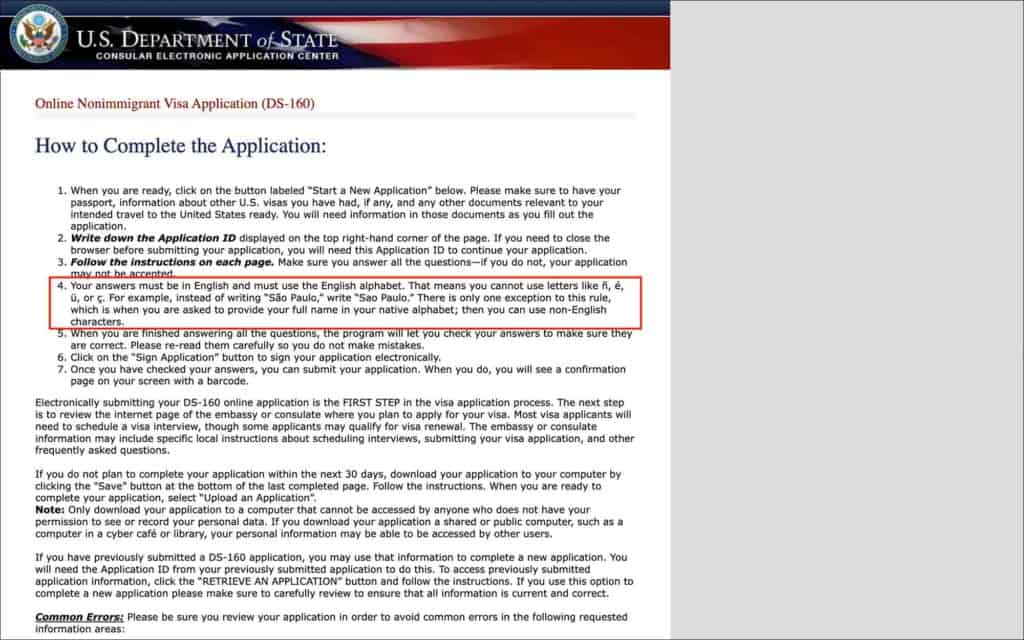
DS-160 form supports only English alphabet A-Z. Therefore, the “Surnames” and “Given Names” fields in the DS-160 form only accept English alphabets. That means you cannot enter characters like ñ, ü or ç.
If you fill out your surnames or given names fields with non-English alphabets, special characters or accents, the application will display an error. Therefore, you will have to fill out the surnames and given name fields using English alphabets A-Z without any special characters or accents.
So, if you have any non-English alphabets (A-Z), special characters or accents in your name, then it is necessary to enter your full name with those characters in the “full name in native alphabet” field. This field accepts any non-English alphabets, special characters or accents.
Filling out the “full name in native alphabet” field is not mandatory. If your computer or laptop does not have a local language keyboard or does not support typing in your local language, then you can simply select “Does Not Apply/Technology Not Available”
US consulates may use this field if they need to send any mail communication to your physical address in your country. In countries where English is not widely understood, the mail delivery staff may not be able to deliver the mail if your name is in English. Therefore, fill out this field only if English is not widely spoken or understood in your country.
Also, your full name in the native alphabet is stored and used for internal purposes only. It will not appear on your visa. Skipping this field will not affect your visa result.
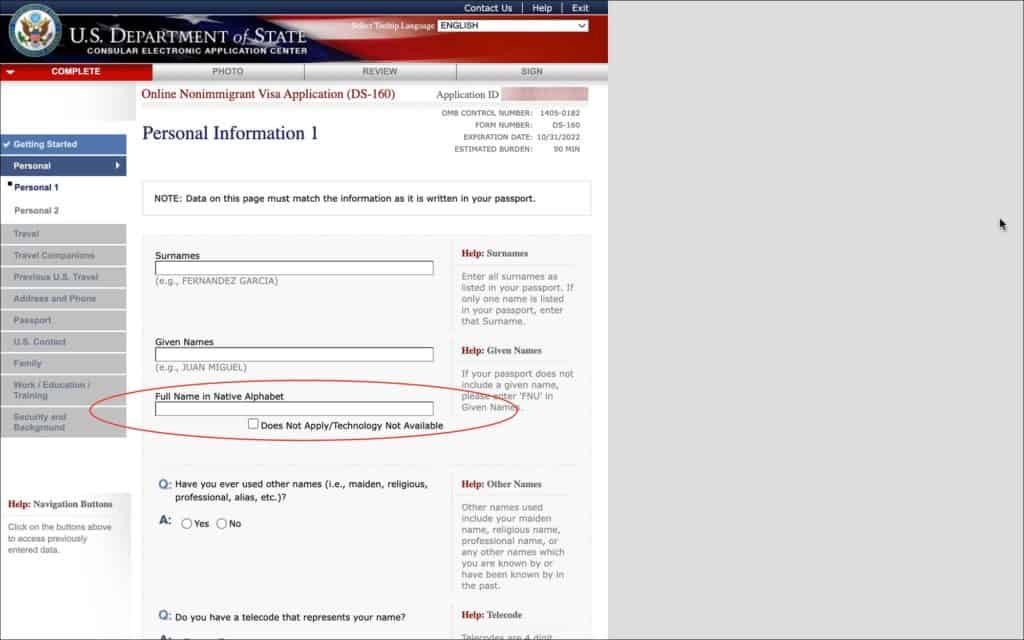
You will come across the field “Full name in native alphabet” within the “Personal Information 1” section in the DS-160 form of your US visa application. In this section, you will need to fill in your surname, given name and full name in your native alphabet. You can easily fill in your surname and given name fields by referring to your current passport.
If your name does not include any special characters or accents, you’re not required to fill in the “Full name in native alphabet” field. Instead, you can simply select the option “Does Not Apply/Technology Not Available”.
If, however, your name does include special characters or accents, you will be required to fill out the “Full name in native alphabet” field. The first two fields, “Surname” and “Given Name”, require you to fill them out without the use of any special characters or accents.
Once you have completed these fields, you can then move on to “Full Name in Native Alphabet” whereby you must enter your full name. This includes all special characters or accents that may be present in your name. Let’s look at a few examples below.
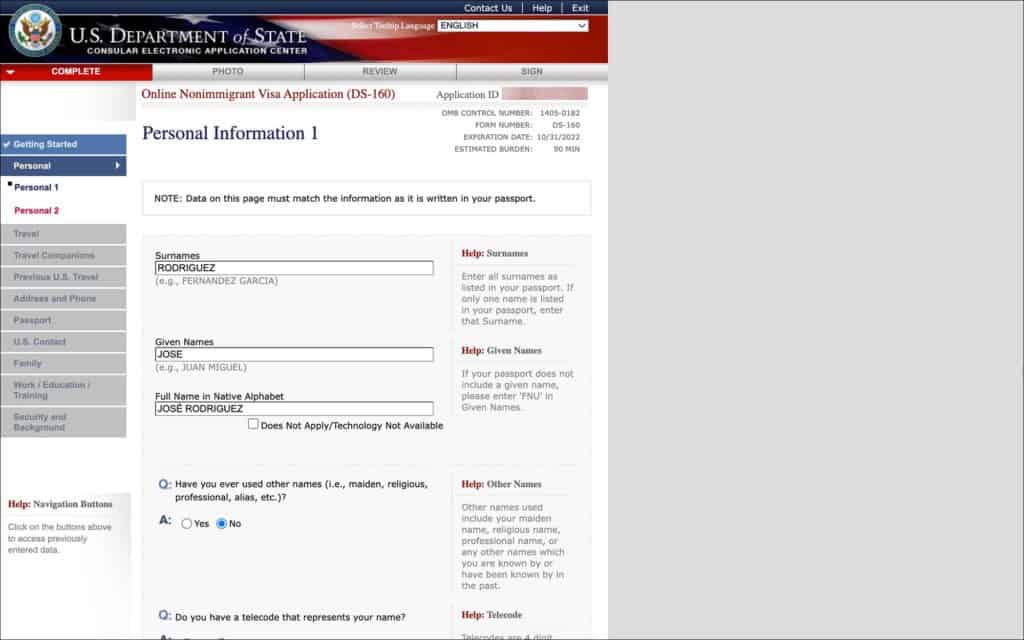
There are several accents used in common names in the Spanish language. For the sake of this example, your full name is José Rodriguez. It will therefore appear in your passport as follows:
Surname: Rodriguez
Given Names: José
Taking this information and transferring it to your DS-160 form will occur as follows:
Surname: Rodriguez
Given Names: Jose
Full Name in Native Alphabet: José Rodriguez
This changes slightly if you have a middle name in your passport. You can use the same example as above, with the addition of a middle name, García, to understand this:
Surname: Rodriguez
Given Names: Jose Garcia
Full Name in Native Alphabet: José García Rodriguez
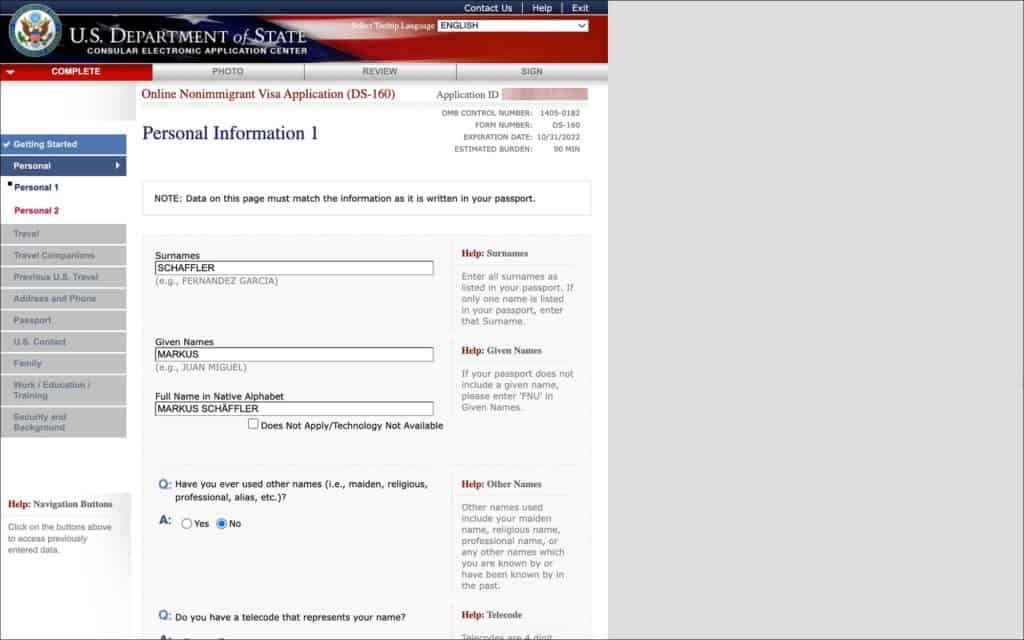
Another common language that utilizes special characters is German. One that will appear often in the language and that is of importance here is the umlaut. An umlaut is used to indicate a different vowel quality, making use of a mark (¨) to do so. The most common examples of this are Ä, Ö and Ü. They simply translate to the following:
Now let’s look at an example of a name that utilizes an umlaut in the German language and how that should be filled in on your DS-160 form. For this example, your name is Markus Schäffler. It will therefore appear on your passport as follows:
Surname: Schäffler
Given Names: Markus
Taking this information and transferring it to your DS-160 form will occur as follows:
Surname: Schaffler
Given Names: Markus
Full Name in Native Alphabet: Markus Schäffler
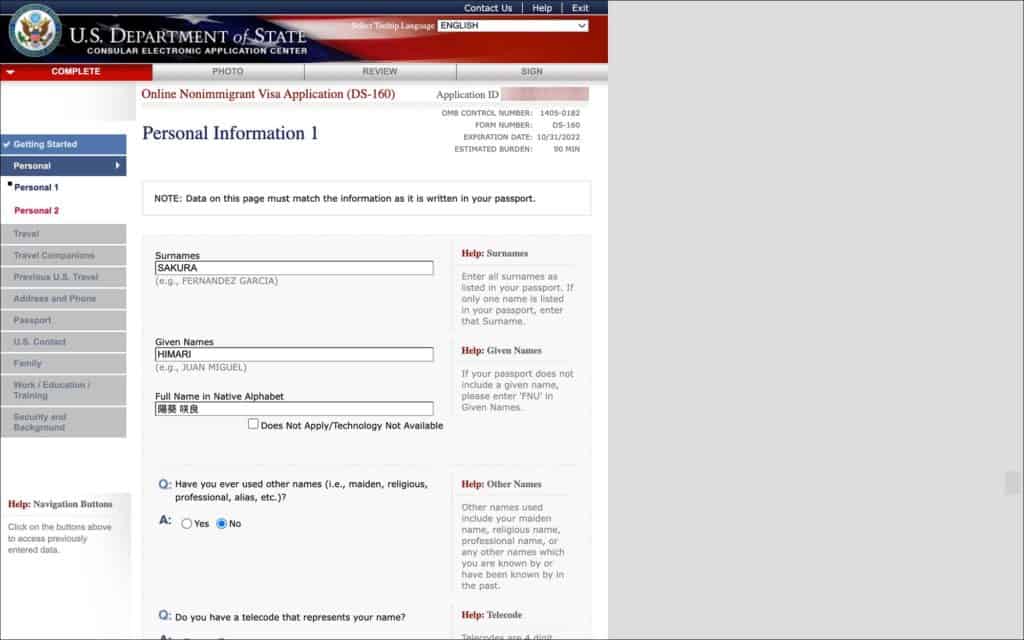
An example of this in the Japanese language, which does not make use of the English alphabet characters. For this example, your name is Sakura Himari. It will therefore appear on your passport as follows.
Surname: Sakura
Given Names: Himari
Taking this information and transferring it to your DS-160 form will occur as follows:
Surname: Sakura
Given Names: Himari
Full Name in Native Alphabet: 陽葵 咲良
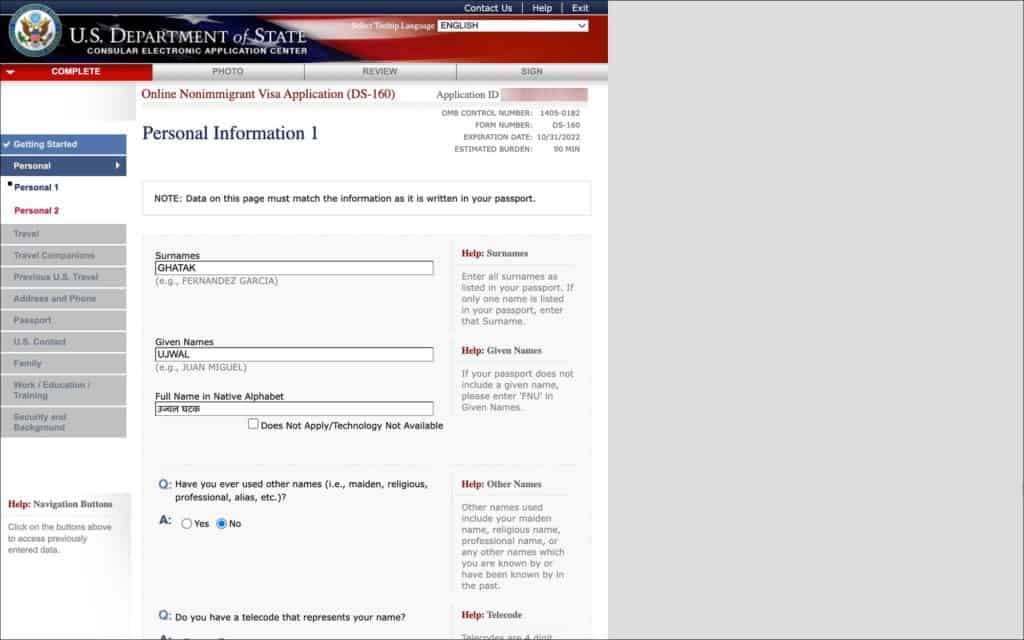
Lastly, let’s look at an example of a full name in native alphabet in the Hindi language:
Surname: Ghatak
Given Names: Ujwal
Taking this information and transferring it to your DS-160 form will occur as follows:
Surname: Ghatak
Given Names: Ujwal
Full Name in Native Alphabet: उज्वल घटक
As you can see from the above examples, there are many languages that make use of their own unique alphabets with special characters and accents, giving the words a completely different appearance.
DS-160 form only supports English alphabets, except for the field “Full name in native alphabet”. Therefore it’s important to fill out your name in both in English alphabet and also in your native alphabet.
Again, this field is not mandatory, so you can skip it if it doesn’t apply or don’t have the technology to type your name in your native alphabet.
You can only fill out your DS-160 form in English alphabets A-Z. The only instance where you can use your native language characters is when filling out the “Full name in native alphabet” field. This is not a required field, but if your name has any non-English characters, you may have to fill out this field.
The DS-160 form is lengthy and complicated. It requires a substantial amount of time to complete. Make sure to set aside enough time, at least a few days, to complete and for any unforeseen issues.
WRITTEN BY THIRUMAL MOTATI

Thirumal Motati is an expert in tourist visa matters. He has been traveling the world on tourist visas for more than a decade. With his expertise, he has obtained several tourist visas, including the most strenuous ones such as the US, UK, Canada, and Schengen, some of which were granted multiple times. He has also set foot inside US consulates on numerous occasions. Mr. Motati has uncovered the secrets to successful visa applications. His guidance has enabled countless individuals to obtain their visas and fulfill their travel dreams. His statements have been mentioned in publications like Yahoo, BBC, The Hindu, and Travel Zoo.
I highly recommend using these websites to plan your trip. I use these websites myself to apply for my visas, book my flights and hotels and purchase my travel insurance.
Get a verifiable flight itinerary for your visa application from DummyTicket247. DummyTicket247 is a flight search engine to search and book flight itineraries for visas instantly. These flight itineraries are guaranteed to be valid for 2 weeks and work for all visa applications.
Find the cheapest flight tickets using Skyscanner. Skyscanner includes all budget airlines and you are guaranteed to find the cheapest flight to your destination.
Book your hotel from Booking.com. Booking.com has pretty much every hotel, hostel and guesthouse from every destination.
If traveling on a one-way ticket, use BestOnwardTicket to get proof of onward ticket for just $12, valid for 48 hours.
Purchase travel medical insurance for your trip from HeyMondo. HeyMondo offers a 5% discount to Visa Traveler readers (use the link above), and covers all medical and travel emergencies during your trip.
Need more? Check out my travel resources page for the best websites to plan your trip.
LEGAL DISCLAIMER
We are not affiliated with immigration, embassies or governments of any country. The content in this article is for educational and general informational purposes only, and shall not be understood or construed as, visa, immigration or legal advice. Your use of information provided in this article is solely at your own risk and you expressly agree not to rely upon any information contained in this article as a substitute for professional visa or immigration advice. Under no circumstance shall be held liable or responsible for any errors or omissions in this article or for any damage you may suffer in respect to any actions taken or not taken based on any or all of the information in this article. Please refer to our full disclaimer for further information.
AFFILIATE DISCLOSURE
This post may contain affiliate links, which means we may receive a commission, at no extra cost to you, if you make a purchase through a link. Please refer to our full disclosure for further information.
I need your guidance in the surname field on the DS-160 form. I have a Dropbox (Interview waiver) appointment for a B2 tourist visa scheduled on Aug 17 at VAC. My Surname as per my Passport is Krishnaswamy Iyengar Srinivas Murthy. However, I am unable to fill the same in DS-160 due to the maximum character limit. And surname got truncated by three letters “thy”. So I filled it as: “Krishnaswamy Iyengar Srinivas Mur”. Clarified with US Travel Docs and they said to proceed with Dropbox appointment and request vac staff to honor the DS-160. Shall I proceed or revise DS-160 and update in CGI profile? Thanks!
Hi Mr. Gopal! DS-160 has a character limit on the name field, so it’s alright if your name gets truncated. There is no workaround for it so go ahead with your existing DS-160. Your visa decision will not be affected by your name truncation, so you are fine. Good luck!
I have an apostrophe in my surname D’souza. I’m getting an error if I enter apostrophe. Should I enter surname as “Dsouza” or with a space as “D souza”? In this case do I have to enter full name with apostrophe in “Full name in native alphabet” field
Hi Eve! This is an interesting case and I don’t have a confirmed answer for you. But in my opinion, it should be “Dsouza”. And yes, you do have to enter your full name with apostrophe in the “full name in native alphabet” field.
Having Trouble Navigating Visas?
Hi! I'm Thirumal Motati. I've been traveling the world on tourist visas for more than a decade. I've obtained several tourist visas, including the most difficult ones such as the US, UK, Canada, and Schengen, some of which were granted multiple times.
I'm here to help you navigate the visas and travel the world.
Enter your name and email to download my FREE eBOOK: The Secret to VISA-FREE Travel
Your FREE eBook is on it’s way to your inbox! Check your email.
